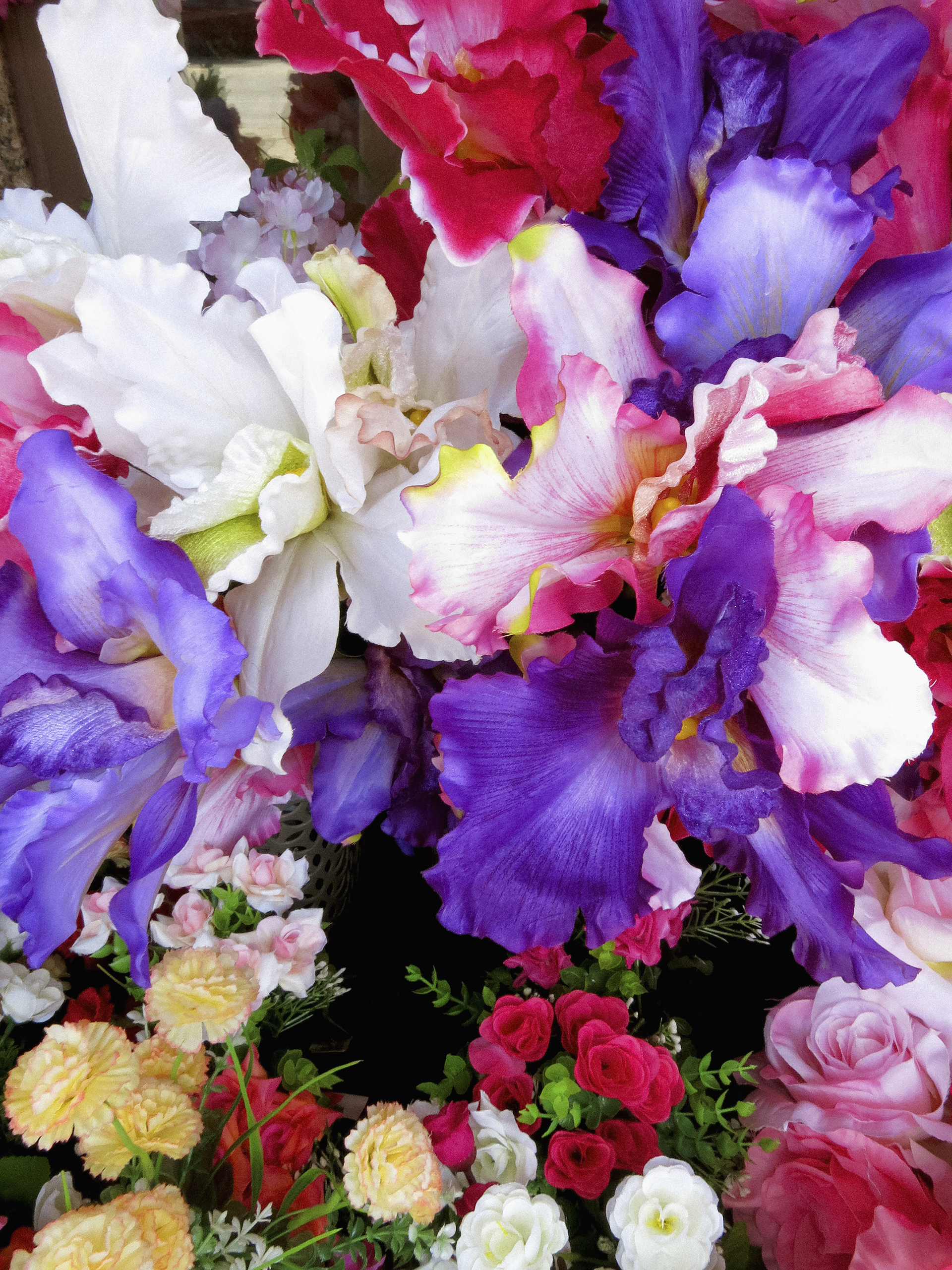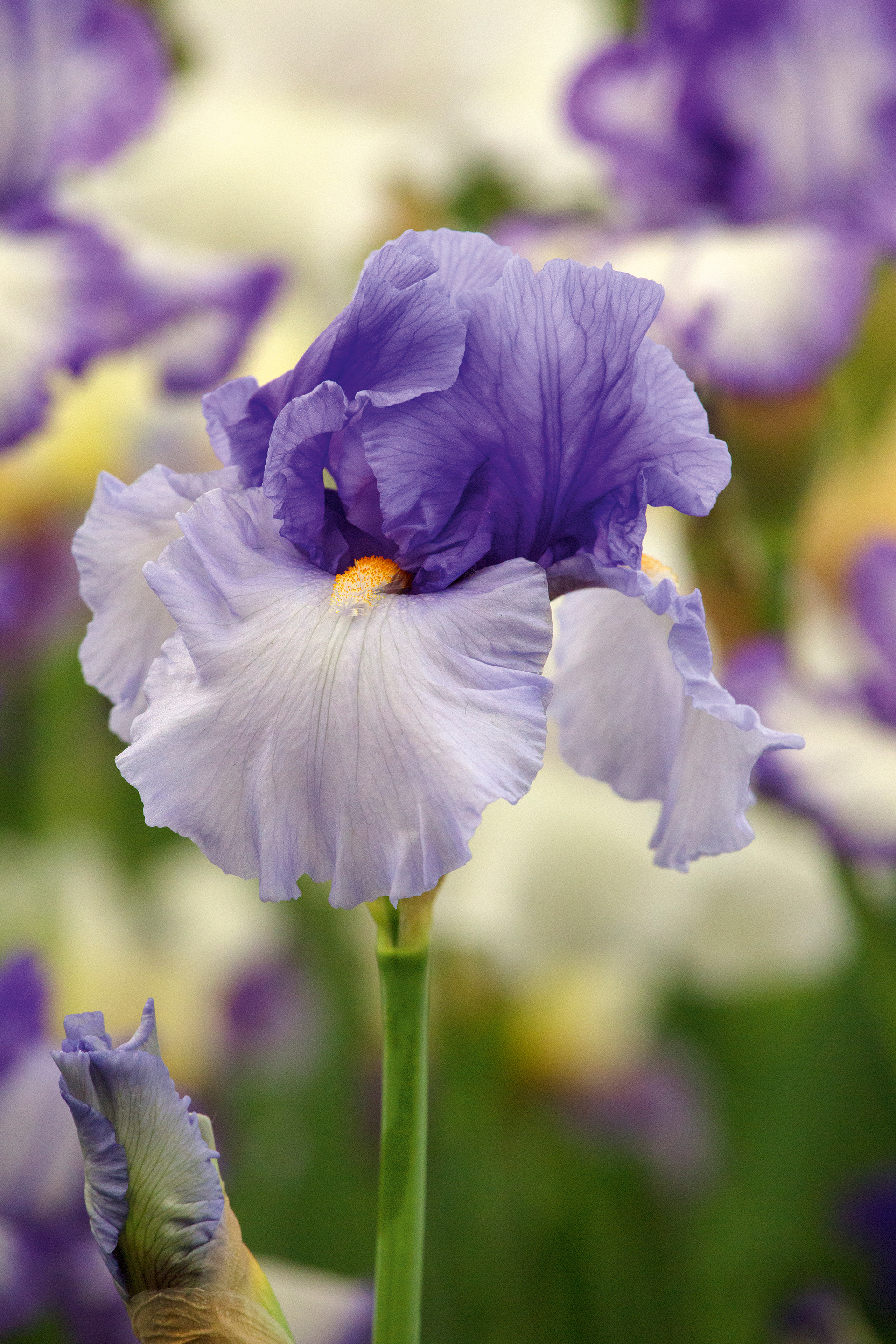How to grow irises
Add color and interest to your garden by learning how to grow irises


An easy way to fill your garden with color, learning how to grow irises will add character and interest to even the barest of gardens.
Taking their name from the Greek goddess of the rainbow, irises are available in a huge range of colors from the iconic purples and deep blues through to oranges, reds, pinks and whites. There is a style and color of iris to suit every one of your container and flower bed ideas.
How to grow irises

Here, we take you through the basics of growing irises, caring for them and cutting them for indoors.
How to grow irises from bulbs
If you're wondering how to grow irises then your first question will of course be 'when to plant irises?'. Irises are best planted in early fall though they can be planted through to the start of winter.
- Prepare your border by digging in well-rotted organic matter - irises need fertile soil to produce the best blooms.
- Dig a hole around 5in deep per bulb and space each bulb 3in apart. This works for most irises but consult your bulb packet for specific spacing details.
- Place a single bulb in the hole with the roots pointing downwards.
- Then cover with soil and water well.
- Having given them a good initial water, hold off on further watering until growth appears as this will help prevent rot.
- If you've got fertile soil, then irises don't need feeding making them a great low-maintenance choice for the garden.
Should I soak iris bulbs before planting?
It is not necessary to soak iris bulbs before planting, especially if you give them a good water once they've been planted in the ground.

How to grow irises from rhizomes
Rhizomes are different from bulbs. Rather than being a round solid mass with a stem at the top and roots at the bottom, rhizomes look more like a wood stem producing lots of roots. Unlike a bulb, rhizomes grow horizontally which influences how they should be planted. Bearded irises are the most common rhizome iris.
Ideally plant your rhizomes in fall, but if you purchase them at another time of the year, then it's best to plant them rather than waiting for the correct time. Just bear in mind that if you plant them in the spring, it's unlikely that you'll get flowers that year.
Design expertise in your inbox – from inspiring decorating ideas and beautiful celebrity homes to practical gardening advice and shopping round-ups.
- If purchased as a bare rhizome, soak the it in water for a few minutes before planting in well drained loamy soil. 'Amend heavy clay soils with plenty of grit and well rotted manure prior to planting,' recommends Sue Sanderson, horticultural executive at Thompson & Morgan.
- Rhizomes like to bake. This means that the top half must be above the surface of the soil and not shaded or covered by other plants. They are prone to rot if planted too deeply.
- Be sure to plant them at least 1 foot apart as irises grown from rhizomes typically grow into larger plants.
- In dry conditions water lightly every other day, until the shoot and roots take hold, then stop.
- Never use nitrogen-based feed as this will stimulate leaf growth and cause the rhizome to rot.

Do irises come back every year?
Yes, irises do come back every year as they are perennials. If cared for properly, irises will keep coming back every year for over 20 years. You must ensure that you split your bulbs and rhizones every few years, though.

How to grow irises through division
'After you make an initial investment in rhizomes, you can divide and increase your stock for years to come,' says Erin Benzakein author and founder of Floret Flowers.
It is important to divide irises every four to five years to keep them flowering. As well as keeping your beautiful iris plants healthy, splitting your iris plants also means you can multiply your collection of irises.
'Divide iris rhizomes after flowering by trimming back foliage, lifting, removing any dead pieces from the rhizome, splitting and replanting,' advises PL gardening expert Leigh Clapp
It's worth noting however, that they sometimes don't flower quite as successfully the first year after splitting as irises need to recover from being uprooted. You will, however, get even better blooms the following year.

How to grow irises in containers
Iris reticulata and Iris histrioides are best for planting in pots due to their smaller size. Be sure to pick a pot that provides good drainage, with plenty of holes in the bottom, as irises will not thrive if waterlogged.
For larger containers, gardening expert Melinda Myers recommends Iris sibirica. 'They are more tolerant of shade and moist soil and the grass-like leaves look nice throughout the growing season. Siberian iris has a fibrous root system so plant them with the crown (place where leaves meet the stems) even with the soil surface.'
- If growing in outdoor pots, Irises are best planted in fall.
- Fill a shallow bulb tray with well draining soil.
- Plant 3in apart and three inches deep.
- Water well, then wait until growth appears before watering regularly.
- 'Consider planting iris (at the proper depth of course) with other plants so once it is done flowering the iris leaves can provide a vertical accent while the surrounding flowers add color,' advises Melinda.
- At the end of the flowering season, lift the bulbs and store in a dry place until the following fall when you can plant them again.

How to grow irises for cut flowers
If you're growing irises for cut flowers, then it's no different to growing irises in the border or in pots. You just have to take into account that once you cut them, that section of the border or pot will be empty, so its worth having some plants on hand to fill in the space.

'Irises are a fantastic choice for cut flower arrangements as they grow in a myriad of colors, and their petals, likened to little faces or butterflies, add interest and intrigue. What’s more is they’ll last well if you keep refreshing the water in their vase every 2-3 days,' advises Lynne Melvin, product manager at Serenata Flowers.

How to grow irises indoors in winter
'Irises make ideal plants for pots and containers. I now grow them only in pots inside,' says gardener Sarah Raven in her blog. Miniature irises are ideal for forcing indoors and will mean that you can have beautiful irises in your home throughout winter. However, in order to have your winter blooms, you need to plan in advance.
- Make sure your bulbs are firm, free from rot and not sprouting.
- Plant your bulbs near the surface in a pot of loam based soil with grit.
- 'These irises need a spell in the cold to flower well,' says Sarah Raven. So keep your planted bulbs in a cold - less than 50°F - dark place for 10 to 15 weeks.
- Then put into their final spot to continue to grow and flower. This will take approximately 17 weeks from planting.
- Once they've finished flowering, 'leave them in their pots undisturbed - against a wall, perhaps - or plant them somewhere in the garden where you'll see them clearly next year,' suggests Sarah Raven.

Where do irises grow best?
Irises grow best in well drained soil in a sunny position, whether in a planter or in the border.
'There is a huge variety of iris flowers so how and where you grow them will depend on the species – many, for example, like well-drained soil and sunshine but some are happy in shadier spaces. However, grown in the right spot they can be low maintenance and make the perfect addition to any garden,' advises Lynne Melvin, product manager at Serenata Flowers.

'Bearded irises like a sunny spot with well-drained soil and work well with choices such as lupins, foxgloves, salvias, alliums, roses, nigella and phlox,' says Leigh Clapp. All of these flowers can also be cut for the vase and work together to create a beautiful display.

'Irises’ bloom time coincides with that of peonies and biennials, and they all look stunning together,' says Erin Benzakein author and founder of Floret Flowers. 'While bearded irises add drama and texture to flower arrangements and some even carry a sweet scent.'
Is Epsom salt good for irises?
Epsom salt is only good for irises if they have a magnesium deficiency. 'Unless magnesium is deficient (shown by inter-veinal yellowing of older leaves) there is no need to add magnesium as Epsom salts. Indeed it could be damaging interfering with potassium uptake and also making clay soils too sticky,' says Guy Barter Chief Horticulturist at RHS.

'Good gardening practice for irises is to add manure or compost before planting, and a general fertiliser as recommended by manufacturers every spring. The fertiliser can be omitted if plants are growing strongly. A mulch of rotted compost or manure is advantageous for many irises such as Iris siberica, but not for bearded rhizomatous irises,' continues Guy.
This feature was created by H&G's sister brand, Period Living magazine
Subscribe to Period Living for more inspiration
Period Living is the UK's best-selling period homes magazine, and is also available in the US. A subscription provides you with all you need to know about caring for and improving a traditional house and garden in a classic English style.

Having graduated with a first class degree in English Literature, Holly started her career as a features writer and sub-editor at Period Living magazine, Homes & Gardens' sister title. Working on Period Living brought with it insight into the complexities of owning and caring for period homes, from interior decorating through to choosing the right windows and the challenges of extending. This has led to a passion for traditional interiors, particularly the country-look. Writing for the Homes & Gardens website as a content editor, alongside regular features for Period Living and Country Homes & Interiors magazines, has enabled her to broaden her writing to incorporate her interests in gardening, wildlife and nature.
